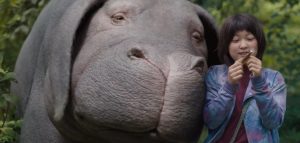Note: this guide is for writing the 500-750 word “academic summary” review. Some of these suggestions are helpful for longer reviews or review essays, though those are much more about making an argument about the book or historiography.
What do you do if you’re unsure whether you need to read that new book about rats in revolutionary Paris or the untold story of Jefferson’s wig? You look for reviews. In particular, you seek the academic summary kind, a 500-750 word overview that tells a busy reader what is at the book’s heart. Writing these summaries isn’t the most glamorous job, but they grease the wheels of the historical profession. Below are some suggestions on how to write academic reviews as painlessly as possible.
A good review starts with careful reading and economical note-taking. Somewhere during my preparation for general exams I stopped actually reading. Mostly, I skim. That’s no good for this. As a reviewer, you owe it to the author to read everything carefully and check the footnotes. However, don’t take an overabundance of notes. Be on the lookout for a few key quotations from every chapter. I like to write a 2-3 sentence summary of each chapter after I’m done reading it. Keep a broad perspective; you don’t want to lose the forest for the trees.
When it comes time to write the review, think about what the reader wants. Generally, it’s a short overview of the subject and argument followed by a slightly expanded discussion of some particularly interesting key themes and then an overall assessment. That’s it.
To do that, open with a short hook describing an interesting nugget or anecdote from the book. A well chosen opening like this should ideally reflect the book’s focus or argument and therefore give the reader a sense of the book’s flavor. Then you pivot to a one-to-two paragraph overview. Tell us the book’s subject, argument, and importance. Use at most two quotes; you don’t want to bury the reader. Then you want a paragraph on an interesting theme of the book (this one should be pretty positive). The next paragraph or so can raise another theme, with an eye toward constructive criticism or engagement with the book’s ideas. This is where you can get a bit into your analytic take / perspective. By this point readers expect a little of that. Then you end with a paragraph (or even a few sentences) providing an overall assessment of the importance or relevance of the book. Bam! You’re done.
General tips:
Reviews of this kind are somewhat formulaic. This is not the time to experiment with form. Readers of this kind of review are looking for a summary. If you want to write one of those reviews that is more about the human condition than the book in question, save it for the LRB/NYRB/LARB.
The first few paragraphs are an overview. Be faithful to the author’s argument, and keep your (brief) analytic take for later in the review.
Now is not the time to dump on a bad book. Be charitable. Raise legitimate criticisms constructively. Even bad books have useful information and content for other scholars.
Don’t nitpick. It’s lazy and stupid. None of us devote years of our lives to the copy-editing. Engage with the ideas.
You should write a few of these a year. You owe it to the profession!
For an example of a few reviews, here’s one I wrote for the Kentucky Historical Register and (slightly longer) one for H-NET.
 In a key scene in the film Okja, we see a young girl named Mija walking with her genetically-engineered superpig friend, Okja, as tens of thousands of nameless beasts watch through a feedlot fence. Director Bong Joon-ho is asking viewers to reflect on what separates Okja from her fellow species and whether the distinction is significant. Okja is the tale of a relationship between a young girl and an animal, but it is also an exploration of
In a key scene in the film Okja, we see a young girl named Mija walking with her genetically-engineered superpig friend, Okja, as tens of thousands of nameless beasts watch through a feedlot fence. Director Bong Joon-ho is asking viewers to reflect on what separates Okja from her fellow species and whether the distinction is significant. Okja is the tale of a relationship between a young girl and an animal, but it is also an exploration of 